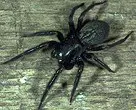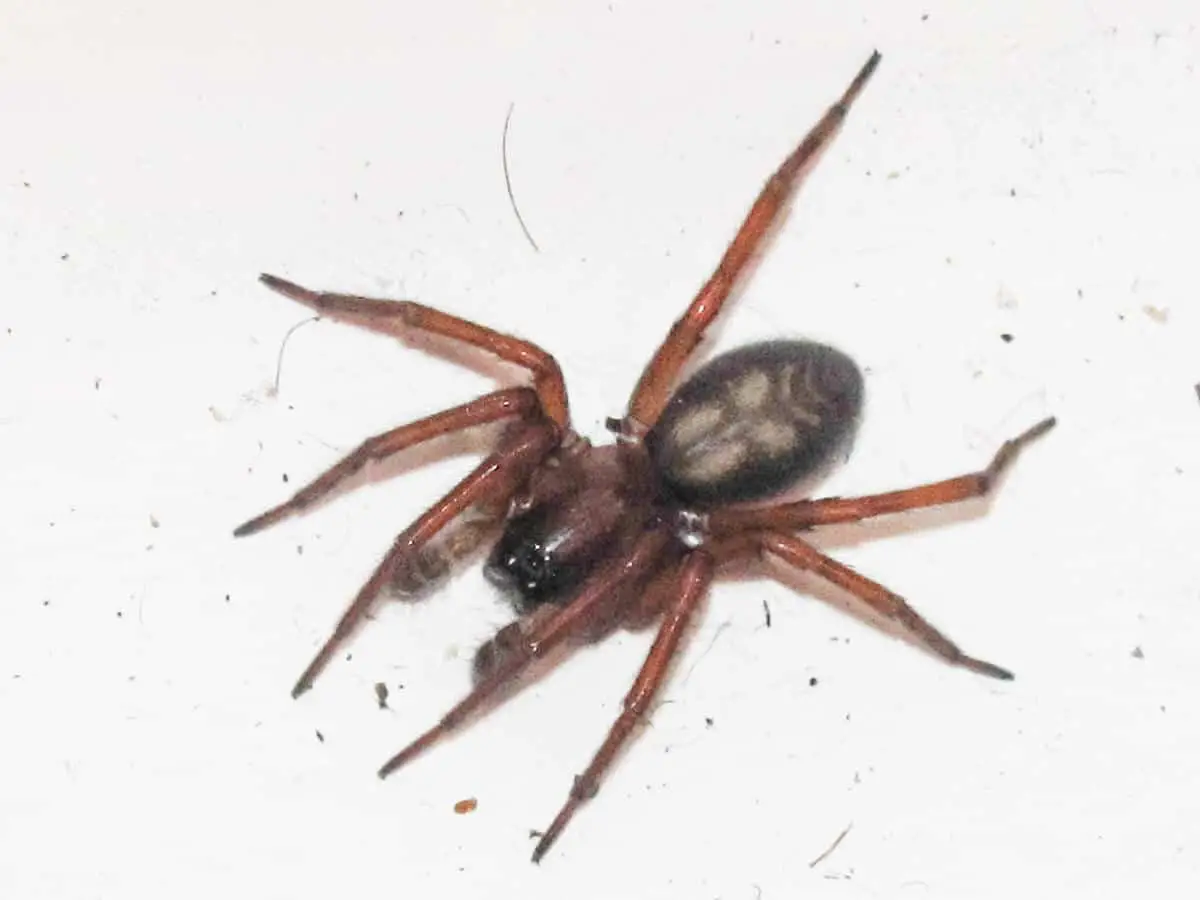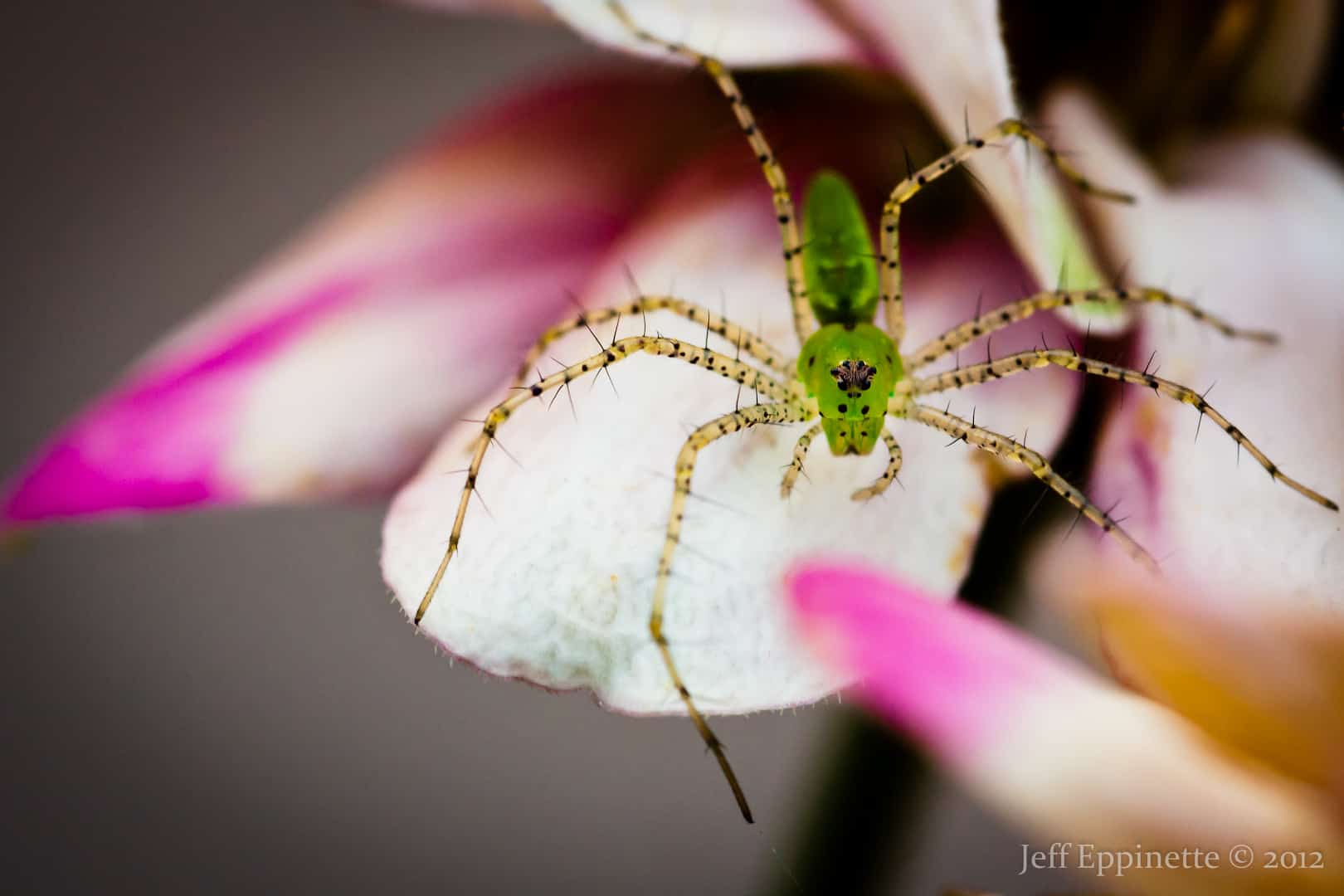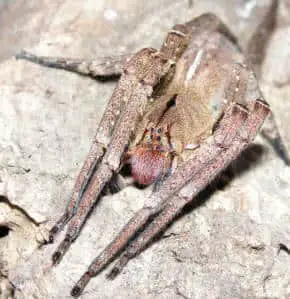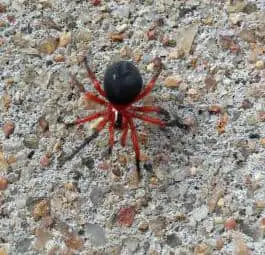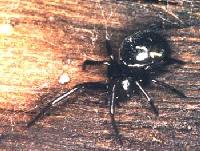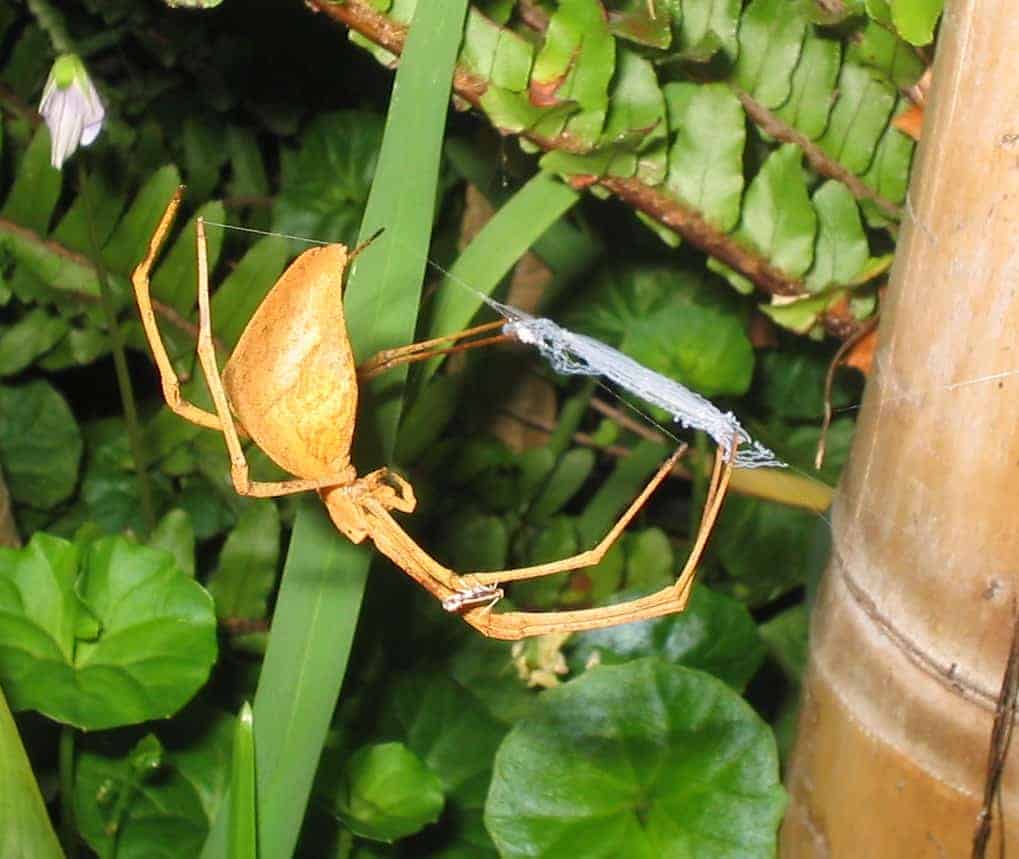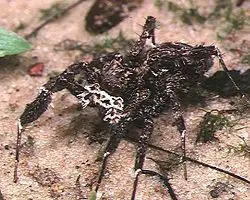Black and Grey House Spiders are widely distributed in southern and eastern Australia and are also found in the United States. Their webs form untidy, lacy silk sheets with funnel-like entrances. Black House Spiders are found on tree trunks, logs, rock walls and buildings (in window frames, wall crevices, etc). Badumna longinquus may be found in […]
Hackle Mesh Weaver
Hacklemesh Weaver Spiders (or Hackledmesh Weaver), Callobius Bennetti, belong to the Callobius family which is a spider genus in the family Amaurobiidae. Amaurobiidae is a family of spiders also known as “tangled nest spiders”, “night spiders” or “hacklemesh weavers”. These cribellate spiders of medium size look similar to the related Agelenidae, (funnel weavers) but have shorter legs and much smaller spinnerets. They share many […]
Lynx Spider
Lynx spiders get their name from the way that they sometimes pounce on their prey in a catlike fashion. These spiders spend their time hunting for insects in bushes and low plants. They are fast runners, but can occasionally be seen lying in wait for prey beside flowers. They build no web for prey capture, […]
Brazilian Wandering Spider
Phoneutria spp. is actually a genus with five known similar species whose members are highly venomous. They include some of the relatively few species of spiders that present a threat to human beings. The Brazilian Wandering Spider (Phoneutria fera) can grow to have a leg span of up to 4-5 inches. These spiders are notorious both due to […]
Red and Black Spider
Red and Black Spider (Ambicodamus crinitus, Family: Nicodamidae) In summer, males leave their web, during daylight hours, and wander in search of females. This wandering habit often brings them indoors. Due to the red and black colour, the spider is often confused with the red-back spider and, as red is a common warning colour, the […]
Comb Foooted Spider
Theridiidae is a large family of spiders, also known as the tangle-web spiders, cobweb spiders and comb-footed spiders. The diverse family includes over 2200 species in over 100 genera)of three-dimensional space-web-builders found throughout the world. Theridiid spiders are entelegyne (have a genital plate in the female) araneomorph ecribellate (use sticky capture silk instead of woolly […]
White Tailed Spider
The White Tailed Spider (Lampona cylindrata) is about the size of a 50c piece when fully grown, with a leg diameter about the size of a pin. It has a grey cigar-shaped abdomen with a white spot on the end and sometimes the legs are banded with light traverse marks on the abdomen. These markings […]
Net Casting Spider
The Net Casting spider lives in the warmer parts of USA, Central and South America, Africa and Australia and is sometimes called the Ogre Faced spider or Stick Spider. It is quite large – its body length is about 20mm, and with its legs stretched out, it is about 4 times that length. They have […]
Spitting Spider
The Spitting Spider (Latin name Scytodes thoricica) belongs to the family of six eyed spiders. (Haplogynae). It is called the “Spitting Spider” because it spits a poisonous sticky substance over its prey. Its body size ranges between 3 and 6 mm. Habitat: This spider lives in New Mexico which is in North America. Prey: The […]
Portia Spider
The Portia group of spiders contains 15 species of African, Asian and Australian jumping spiders measuring up to 10 millimetres or 0.39 inches. Odd in appearance, it resembles a scrap of vegetation. Rather than scurrying about like other jumping spiders, the Portia has slow, choppy gait, much like robots in science fiction movies. The Portia is […]

